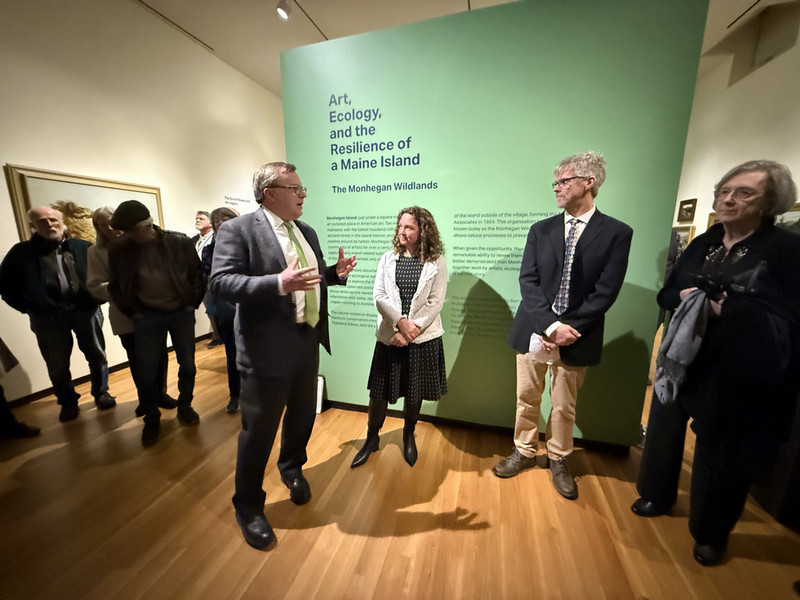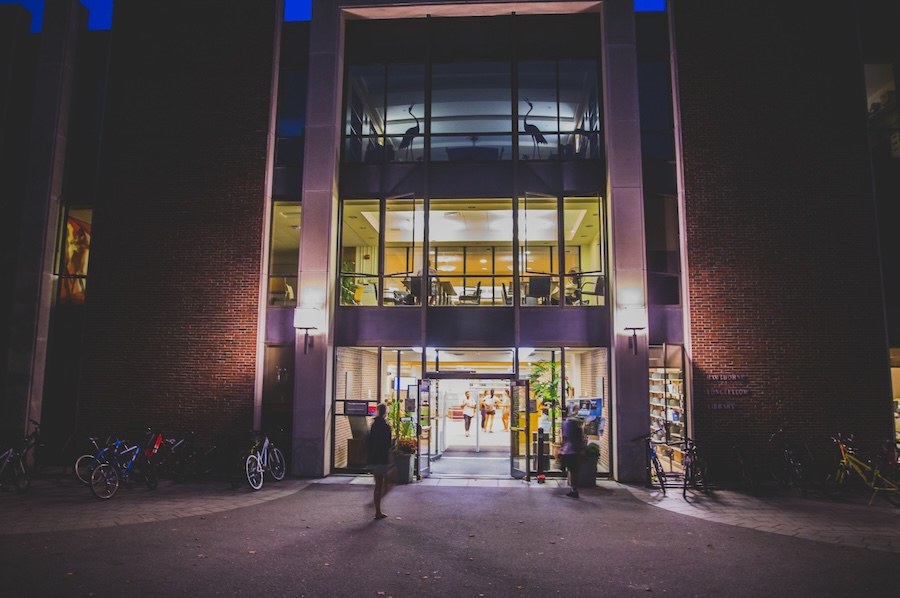Archaeology Class Uses High-Tech Objects to Understand Ancient Ones
By Rebecca GoldfineNasca bridge-spout vessel with condor, ca.100-300 C.E. (Bowdoin College Museum of Art, 1969.86)
"So much of archaeology is about the material," Kohut said recently. "We study the material remains from past people, and fieldwork is so important to learning about archaeology. So I'm trying to bring that experience of archaeology to students so they can have a better sense of what it's like."
In her Descendents of the Sun course, students examine 12,000 years of cultural transformation in the South American Andes. Starting with the first settlers in the region about 18,000 years ago and ending with the Spanish conquest, the class studies religious movements and state formation from the Moche and Nazca people to the Wari, Tiwanaku, and, finally, the Inca.
To make this extraordinary history more accessible to her students, Kohut has them work with—and create—both cutting-edge and ancient technology. This semester, they spun yarn with a drop spindle—and examined textile fibers under a microscope. They studied ancient ceramics, and made digitized 3D models of them.
Alex Gates ’22, who took the class, said, "You can read books and papers about artifacts and history all day, but making something those people made thousands of years ago made me feel like I was connecting with the past on a deeper level."
3D Renderings of Andean Vessels





In one of the labs, Kohut's class collaborated with the art museums of Bowdoin and Bates Colleges to borrow a few Andean artifacts from their collections. Using photogrammetry technology, students created computerized 3D models of the objects that can be digitally manipulated, allowing viewers to study details up close.
To make the models, the students took multiple overlapping photos of the object from various perspectives. The computer software stitches together these images and estimates the X, Y, and Z coordinates of each pixel, creating a three-dimensional rendering.
The renderings will be available via library links at the colleges. Since the public can't touch the art, the models stand in as resources for students and faculty who want to find out what they may reveal about the traditions, cultural adaptations, and artistic expressions of Andean civilizations.
In fact, in the process of making one of these renderings, Niki Bothwick ’20 discovered something remarkable about her object, a vessel from the Chimú culture (900-1470). The piece looks a bit like a cat with a long peanut-shaped body and a spout for a tail. (Bothwick says it's likely a Chimú goddess wearing a headdress.) Bothwick surmised that it can make a whistling noise when filled with liquid and tipped slightly, and was used in funerary or sacrificial ceremonies.
"She was able to use the 3D modeling to discover something new about the vessel that none of us were aware of, and that none of us noticed when viewing the object in person," Kohut said.



The exercise allowed students to engage with the pre-Colombian material culture much like archaeologists might do in the real world, Kohut said. While painted illustrations can say much about a culture's reliance on certain natural resources—like fish—or help expose religious beliefs, the shape, form, and size of the vessels hold clues about their production and use.
The course’s focus on place-based learning gave New Englander Cameron Markovsky ’21 insights on a faraway world. “US history is very Eurocentric. I have always desired to learn more about indigenous life,” he said.
Niki Bothwick's rendering of a double-gourd Chimu whistling vessel, ca. 1000-1476 C.E. (Bowdoin College Museum of Art, 1976.36.2)
Spindel dropping and khipu making
In preparation for teaching her students how Andean people once spun the wool of llamas or alpacas, Kohut glued together wooden drop spindels from materials she bought at a local crafts store.
After practicing how to make thread with drop spindles, the students looked at different fibers under a microscope with help from Bowdoin's Arctic archaeologist Genny LeMoine. "We compared fibers that are common in Peru, like alpaca and cotton, and discussed how archaeologists are able to distinguish between the two," Kohut said.
Following this lesson, the students used store-bought yarn (not the yarn they spun) to make khipus, which were elaborate record-keeping devices once commonly used by Andean cultures.
Composed of an intricate system of nested cords and knots, khipus once kept track of traded goods, like chilies, black beans, and peanuts. They also were used as censuses when authorities conducted population counts.
Some anthropologists also theorize, based on early records by Spanish invaders, that khipus were used as calendars, or even as writing systems.
"The Spanish say they were used to tell stories, histories, genealogies, and songs," Kohut said. "They were not simply repeating numerical information."
Students spent half of a class period recently tying cords together and making knot after knot (and munching on Peruvian corn nuts from Trader Joe's).
Niki Bothwick said that this particular lesson was a highlight for her. "After learning about how they were used in theory, it was a lot of fun being able to make some for ourselves, and helped me further understand the role of khipus in society and how exactly they were used," she said.



